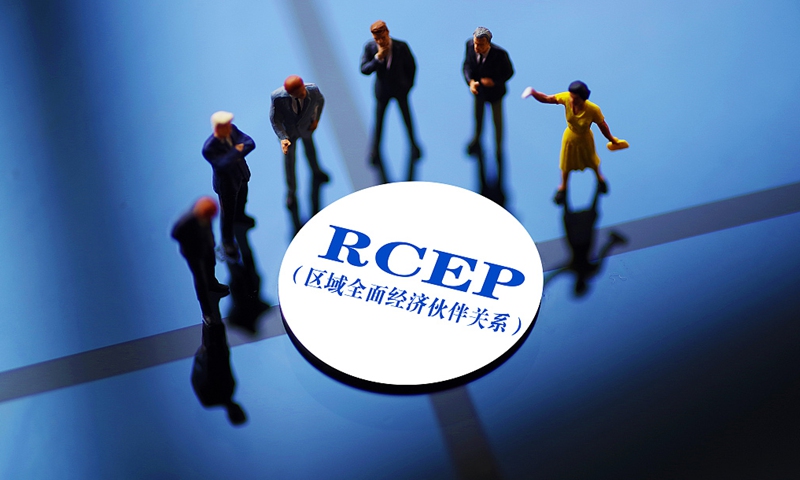RCEP to come into effect in two days; China may become ‘recovery locomotive’ in largest free trade bloc

RCEP Photo: Xinhua
The RCEP will come into effect on January 1, 2022, marking the formation of the world's largest free trade zone in terms of trade volume. The agreement will come into effect in the first batch of 10 countries - six ASEAN members and China, Japan, New Zealand and Australia, a Chinese commerce ministry official said during a press conference on Thursday.
According to Ren Hongbin, Vice Minister of Commerce, the rolling out of a unified general market under the RCEP agreement will effectively offset the negative impact brought about by the pandemic on the economy and increase the confidence of industries and enterprises to carry out trade and investment.
The RCEP covers a market of 2.2 billion people with a combined economic size of $26.2 trillion, or 30 percent of the world's GDP.
A total of 15 Asia-Pacific countries signed the RCEP agreement in 2020, including 10 members of the Association of Southeast Asian Nations (ASEAN) and five of their largest trading partners: China, Japan, South Korea, Australia, and New Zealand. India opted out of the agreement.
It is also the world's largest trading bloc, larger than other regional trading blocs such as the EU and the US-Mexico-Canada Agreement (USMCA).
So far, the General Administration of Customs of China has completed preparations for the implementation of 174 items alone or jointly, accounting for 24.8 percent of the 701 binding obligations under the RCEP, chinanews.com reported on Wednesday.
Experts said that China might become a locomotive in global economic recovery after the implementation of the RCEP, given that the pandemic situation will ease in 2022.
"The door to China's market will open even wider in 2022, with efforts like further precision of the negative list and expansion of free trade zones. The country is well-prepared to be a driving force for the global economic rebound next year," Zhao Gancheng, director of the Center for Asia-Pacific Studies at the Shanghai Institute for International Studies, told the Global Times.
According to Zhao, the RCEP could lead to high-level economic cooperation between China, Japan, and South Korea, such as mutual investment in industries like chips and power machines. Samsung Electronics might increase investment in China in areas such as chips.
Besides, trade ties between ASEAN economies and China are expected to grow closer, with China likely to import more agricultural products from ASEAN members while exporting more consumer goods. The decrease of tariffs on bulky commodities like steel will also lower the cost for Belt and Road Initiative (BRI) projects, Zhao said.
The RCEP is expected to scrap as much as 90 percent of the tariffs on goods traded between its signatories over the next 20 years. And for China, tariffs on nearly 30 percent of its exports are expected to be removed because of the RCEP agreement, China's Vice Minister of Commerce Wang Shouwen said in March.
China's trade with RCEP members surged by 3.5 percent to 10.2 trillion yuan in 2020, accounting for about a third of China's overall trade volume, Chinese customs data showed.
Global Times
